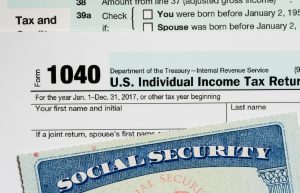The minimum wage increase is crucial, now more than ever, to protect employees from exploitation and ensure they can make a decent living wage. This article will review some of the crucial highlights that you should know about minimum wage laws in 2021.
The Federal Rate
While local and state minimum wage rates have been on the steady rise over the last few years, the federal minimum wage rate has held steady at $7.25 an hour since 2009. Some federal lawmakers have been keen on raising this rate to $15 an hour.
Supporters insist that this raise is necessary if workers are to earn a decent living wage and reduce poverty rates. On the other hand, those opposed to the federal wage hike argue that it will cost too many jobs and hurt small businesses across different sectors.
With the amount of uncertainty brought on by the COVID-19 pandemic, this federal increase is not likely at the moment. That being said, supporters are optimistic about pushing ahead once things have gone back to normal.
State Rate Changes in 2021
Currently, there are 29 states, and the District of Columbia, that have a minimum wage rate which is higher than the current federal minimum wage. This has been in response to the inaction at the federal level.
As of 1 January, 20 states ushered in the new year with an increase in minimum wage. In 9 of these states, the increase was as a result of legislation passed by state lawmakers. The states in question are Vermont, New York, New Jersey, New Mexico, Michigan, Massachusetts, Maryland, Illinois, and California. The changes in New York took effect on 31 December 2020. The scheduled wage increase in Michigan was also effectively halted and pushed for later in the year, on account of the state’s unemployment numbers, which stood at more than 8.5% in 2020.
While local and state minimum wage rates have been on the steady rise over the last few years, the federal minimum wage rate has held steady at $7.25 an hour since 2009.
In another nine states, the increase was in line with automatic annual inflation adjustments. These states are Alaska, Arizona, Colorado, Maine, Minnesota, Montana, Ohio, South Dakota, and Washington. Each of these states has some provision in their state minimum wage and employment law for the annual adjusting of the wage to reflect changes in prices compared to the preceding year. This adjustment ensures that workers experience no decline in their purchasing power.
For the remaining two states, namely Missouri and Arkansas, the New Year’s raise resulted from ballot measures that voters passed. In addition to these 20 states, five others, namely Virginia, Nevada, Oregon, Connecticut, and Washington, DC, are gearing up for minimum wage increases expected to occur later in the year.
Local Minimum Wage Increases
Currently, a total of 44 localities, that is, counties and cities, with a minimum wage that is higher than their state minimum wage rate. Half of these localities hiked their minimum wage on New Year. Again, 13 out of these 44 localities are expected to increase their minimum wage rate later in the year.
Varied Game Plan
There are some significant differences in how the various states are choosing to go about the whole minimum wage rate increases. States like Florida, for example, are choosing to go with gradually increasing the wage over time until it gets to a particular mark. The states consider indicators such as the employment index in the state, as well as the consumer price index.
[ymal]
Other states, such as Michigan, have provisions to pause any scheduled wage increases if the economy is not doing as well. This was witnessed this year when the wage hike had to be pushed to a later date.
Tennessee, South Carolina, Alabama, Mississippi, and Louisiana, have no minimum wage. In two states, namely, Wyoming and Georgia, there is a minimum wage rate that is lower than the set federal rate. In these states, the federal rate applies only to jobs covered under federal laws. Even within the same state, it is not uncommon to find that the minimum wage rate varies by the size of the employer and the locality, among other considerations.
Salaries for Exempt Workers
Beyond the minimum wage hike, employers have to carefully consider their exempt workers. They may need to review salaries for this category of employees or otherwise reclassify them from the exempt status and pay these employees overtime. 2020 saw the Fair Labor Standards Act (FLSA) raise the salary threshold that applies to white-collar exemptions from overtime to $684 a week. In some states, the salary cutoff is much higher.
Some state exempt salary requirements are tied to the minimum-wage thresholds. On the other hand, some states have exempt salary rules that are entirely separate from the minimum-wage thresholds.
Expert Help
An understanding of employment law will help you know if you are being paid a fair wage. Talk to an employment lawyer for more details and representation on wage-related issues and disputes with your employer.






















